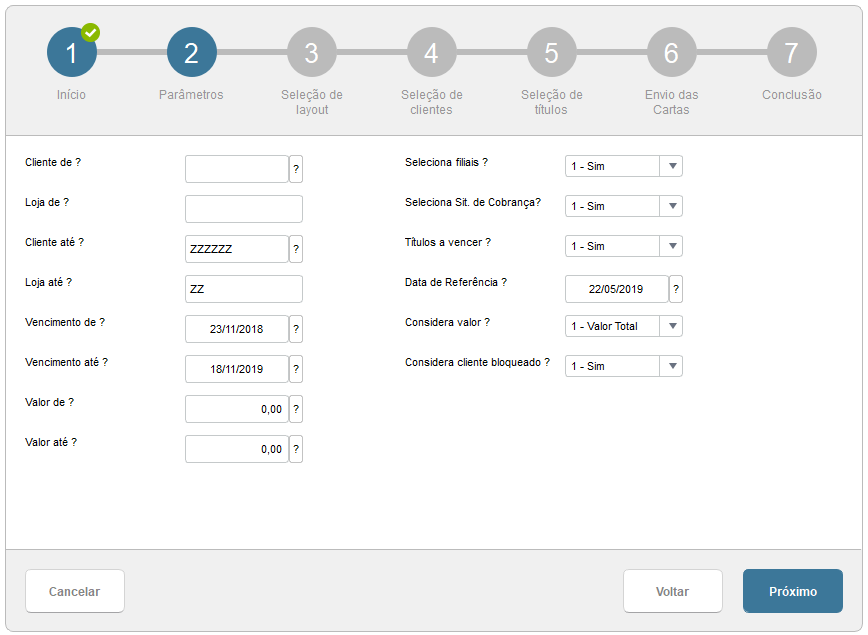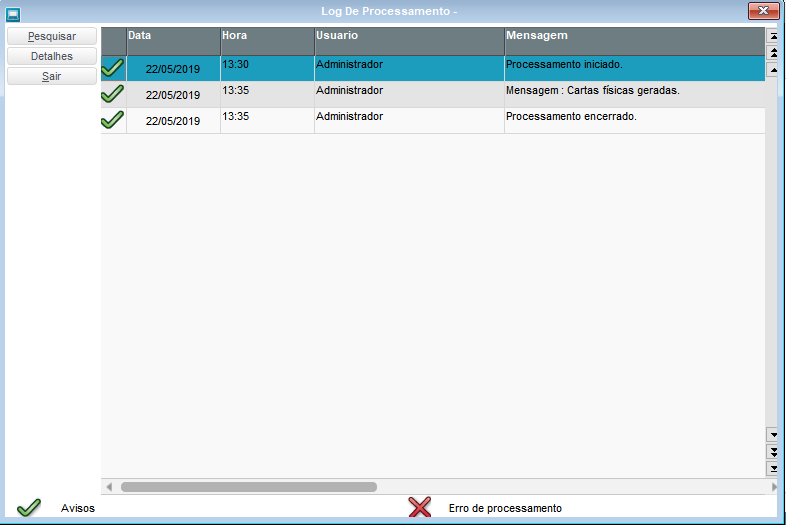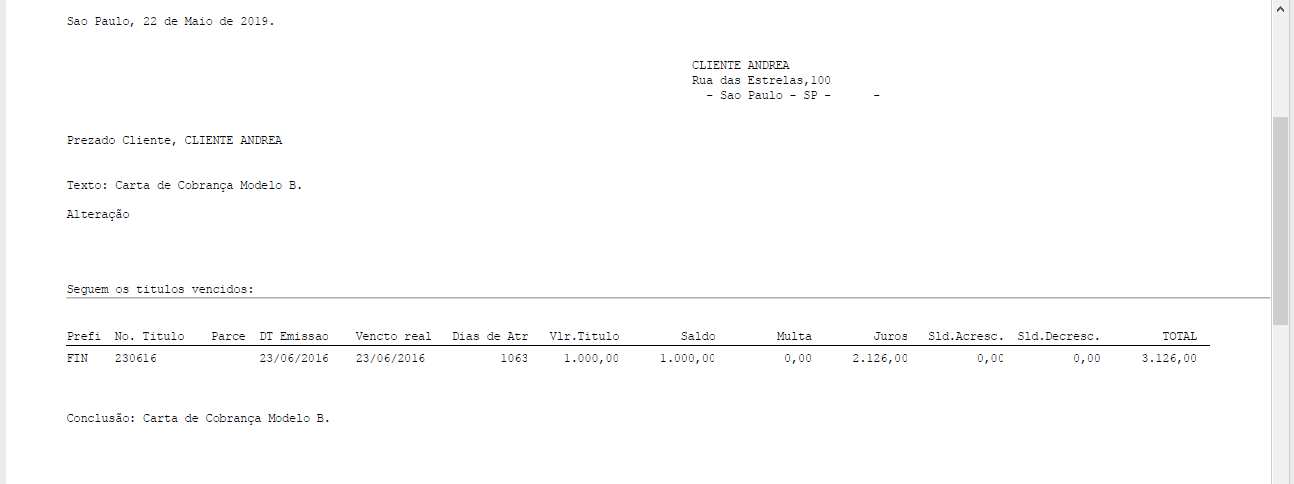INDEX
Note
01. OVERVIEW
This process aims to make available the sending of collection letters to customers who have overdue, maturing, or custom situations.
The routine of sending a collection letter allows the bills that are overdue or due to be duly collected through the sending of electronic (e-mail) and/or physical collection letters.
So that the letters can be generated and sent, you must first define the types of collection statuses to be considered, the period in which the collection notices lie (referring to the overdue and/or due period), and also define the content of the collection text to be presented.
The letters sent will contain the interest and fines calculated up to a predefined date (in a parameter), allowing recipients to know the updated collection value.
It is possible to send the letter with different text types, and it is also possible to supplement the validations specifically for the customers who will receive the collection letters.
A report of collections already made is available to facilitate the follow-up of sent collection letters and their respective recipients and collected bills.
02. RULES AND DEFINITIONS
03. PARAMETERS USED
For sending the letters by e-mail, the already existing parameters are used:
- MV_RELSERV - Server name for sending the email.
- MV_RELACNT - E-mail account to use for sending.
- MV_RELPSW - E-mail account's password;
- MV_RELFROM - E-mail used in the FROM field when sending the e-mail;
- MV_RELBODY - Determines the default subject for the e-mail;
- MV_RELAUTH - Determines if the server demands authentication
- MV_RELAUSR - Username for authentication if demanded in the e-mail server;
- MV_RELAPSW - Password for authentication if demanded in the e-mail server.
The routines for the Collection Letter process do not create new parameters.
04. ENTRY POINTS
- F811PAR: Entry point for initializing the private variables of the second wizard window (parameters) for sending collection letters. Available variables are:
cCliDe: Customer from
cLojaDe: Customer store from
cCliAte: Customer to
cLojaAte: Customer Store to
dDataDe: Issue Date from
dDataAte: Issue Date To
nValDe: Value from
nValAte: Value to
cComboFil: Select Branch ("1"=Yes ; "2" = No)
cSitCob: Select Collection Status ("1"=Yes ; "2" = No)
cComboVenc: Bill due ("1"=Yes ; "2" = No)
dDtRef: Reference date
cComboConVl: Consider Value ("1"=Yes ; "2" = No)
- F811QRY: Entry point that allows you to supplement the query that considers the parameters entered to list available customers. This entry point is executed in the third window of the wizard (Customer Selection) for sending the collection letters.
- F811MAILTO: Entry point that allows changing the variable cTo, which contains the e-mail address to which the collection letter will be sent electronically. The Entry Point receives as a parameter an array containing the following structure:
Array[1] = concatenated string of A1_FILIAL + A1_COD + A1_LOJA selected
Array[2] = Bills array
Array[2][1] = Array of the first bill
Array[2][1][1] = Process Number of the correction letter selected in the Wizard
Array[2][1][2] = String with the value referring to the FK7_IDDOC field
Array[2][1][3] = String of E1_FILORIG














